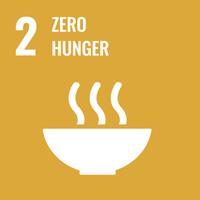Nuclear techniques help reduce pests and develop better crops

- Nuclear technologies help fight against pests, avoiding the need to resort to harmful pesticides.
- Using nuclear techniques to develop new plant breeds means that farmers can grow crops that need less water and that are more resistant to the impacts of climate change.
- Fresh food can last longer if irradiated, and this process also kills E. coli, listeria and salmonella.
Worldwide, 822 million people are afflicted by malnourishment, approximately 9 million people die every year of hunger and hunger-related diseases.
Every year up to 40% of crop yields and millions of livestock are lost due to pests and disease. The sterile insect technique (SIT) uses ionizing radiation to sterilize specially bred male insects, which then compete with wild males to mate with females. The females that mate with the sterilized males produce infertile eggs, reducing the insect population. This technique has been used successfully to control two serious fruit fly pests, the Mexican fruit fly and Mediterranean fruit fly, as well as livestock-killing insects in sub-Saharan Africa.
The crop mutation technique can accelerate the process of breeding new crop varieties by using radiation to speed up and mimic the natural process of spontaneous mutation, the driving force behind evolution. In Peru, this technique led to improved barley and amaranth varieties that have adapted to climatic conditions in high altitudes. The new barley variety increases crop yields and contributes roughly US $32 million annually to the Andean farmers.
Food can be preserved for longer using irradiation. This technique can be used to kill pathogens such as E. coli, listeria and salmonella, as well as bacteria that would otherwise cause food to rot more quickly. Nuclear technologies in food and agriculture improve the yield of crops, help reduce the losses due to pests and insects, and help maintain food fresh for longer, thus increasing the global available food supply.